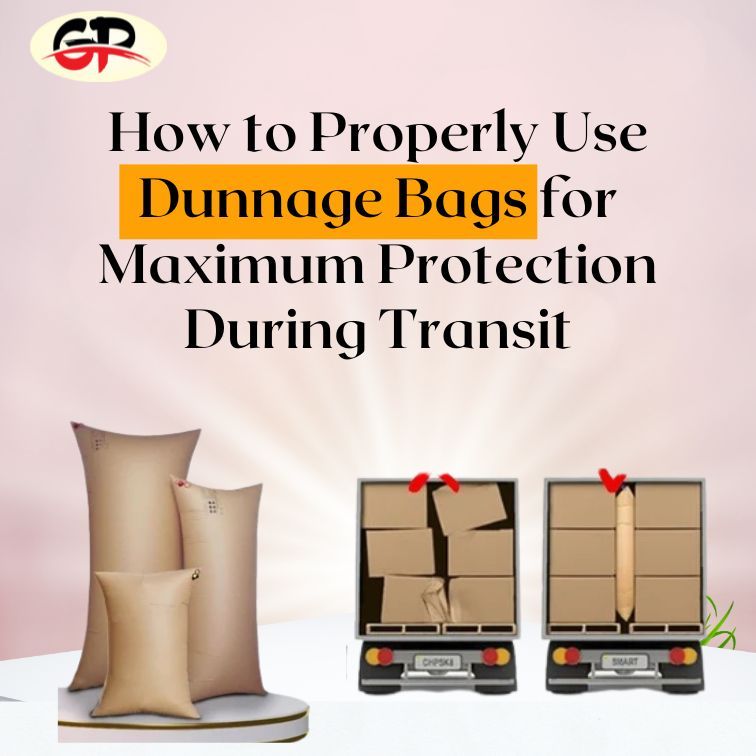How to Properly Use Dunnage Bags for Maximum Protection During Transit
How to Properly Use Dunnage Bags for Maximum Protection During Transit
In the world of shipping and logistics, ensuring that products arrive in perfect condition is paramount. One of the most effective tools for achieving this is the use of dunnage bags. These simple yet crucial devices provide essential protection during transit by stabilizing and cushioning goods. In this comprehensive guide, we will explore how to properly use dunnage bags to maximize protection, reduce damage, and ensure that your products reach their destination intact.
What Are Dunnage Bags?
Dunnage bags, also known as air pillows or inflatable airbags, are designed to fill voids and stabilize cargo during transportation. Typically made from robust materials like kraft paper or laminated plastic, these bags are inflated with air to create a cushioning effect that prevents movement and minimizes the risk of damage.
Why Proper Use of Dunnage Bags Is Crucial
Improper use of dunnage bags can lead to a variety of issues, including:
- Product Shifting: If dunnage bags are not used correctly, products can shift during transit, leading to potential damage or spoilage.
- Increased Costs: Damaged goods can result in costly returns, replacements, and claims, increasing overall shipping costs.
- Customer Dissatisfaction: Delivering damaged products can harm your reputation and lead to dissatisfied customers.
To avoid these problems, it's essential to understand and implement the best practices for using dunnage bags effectively.
Steps to Properly Use Dunnage Bags
1. Assess Your Cargo
Before using dunnage bags, evaluate the size, shape, and weight of the cargo. Different types of dunnage bags are designed for specific purposes:
- Standard Dunnage Bags: Suitable for general cargo protection.
- High-Pressure Dunnage Bags: Ideal for heavy or high-stress loads.
- Custom Dunnage Bags: Tailored for unique or irregularly shaped items.
By understanding your cargo's characteristics, you can select the most appropriate dunnage bags for the job.
2. Choose the Right Size and Type
Selecting the correct size and type of dunnage bags is crucial for effective protection. Here’s how to choose:
- Size: Ensure that the dunnage bags are appropriately sized for the voids they need to fill. Bags that are too small will not provide adequate support, while bags that are too large can be cumbersome and ineffective.
- Type: Depending on the nature of your cargo, choose between standard, high-pressure, or custom dunnage bags.
3. Proper Inflation
Correct inflation is key to ensuring dunnage bags provide optimal protection. Follow these guidelines:
- Avoid Overinflation: Overinflated bags can become rigid and may burst under pressure, causing damage to the cargo. Inflate the bags just enough to fill the voids without making them too tight.
- Ensure Even Inflation: Unevenly inflated bags can create uneven pressure points, leading to instability and potential product movement.
Use an air pump or compressor designed for dunnage bags to ensure consistent and controlled inflation.
4. Strategic Placement
Placing dunnage bags strategically is essential for stabilizing and cushioning your cargo:
- Fill All Void Spaces: Ensure that dunnage bags fill all empty spaces in the cargo area to prevent movement. Gaps can allow products to shift, increasing the risk of damage.
- Position Bags Between Items: Place dunnage bags between individual items to provide cushioning and prevent direct contact. This is especially important for fragile or delicate items.
- Secure Bags in Place: Ensure that dunnage bags are properly positioned and secured within the cargo area. They should not shift or move during transit.
5. Use in Combination with Other Packaging Materials
Dunnage bags work best when used in conjunction with other packaging materials:
- Protective Wraps: Use protective wraps or cushioning materials in combination with dunnage bags for added protection, especially for fragile items.
- Packing Peanuts or Foam: Combining dunnage bags with packing peanuts or foam can offer an extra layer of cushioning and stability.
6. Monitor and Adjust
Regularly monitor the effectiveness of your dunnage bags and make adjustments as needed:
- Inspect During Transit: If possible, check the cargo during transit to ensure that the dunnage bags are still providing adequate protection. Make adjustments if necessary.
- Evaluate Performance: After delivery, assess the condition of the cargo and the performance of the dunnage bags. Use this information to make improvements for future shipments.
7. Train Your Team
Ensure that your team is properly trained in the use of dunnage bags. Training should cover:
- Selection and Sizing: How to choose the right dunnage bags for different types of cargo.
- Inflation Techniques: Proper inflation methods to avoid over or under-inflation.
- Placement Strategies: Effective placement techniques to maximize protection.
Proper training ensures that everyone involved in the packaging and shipping process understands how to use dunnage bags effectively.
Benefits of Using Dunnage Bags Properly
Using dunnage bags correctly offers several benefits:
- Reduced Damage: Properly inflated and strategically placed dunnage bags minimize the risk of product damage during transit.
- Lower Shipping Costs: By preventing damage and reducing the need for replacements or returns, you can lower overall shipping costs.
- Enhanced Customer Satisfaction: Delivering products in excellent condition enhances customer satisfaction and builds trust in your brand.
Dunnage bags are an essential tool for protecting your products during transit. By following the best practices for selecting, inflating, and placing dunnage bags, you can ensure maximum protection, reduce damage, and enhance customer satisfaction.
Proper use of dunnage bags not only improves the efficiency of your shipping process but also helps in maintaining the integrity of your products, ultimately leading to a smoother and more reliable logistics operation.

